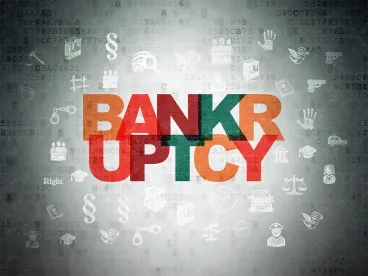In the aftermath of the 9/11 attacks, the Appraisal Institute issued guidance to its MAI appraisers regarding the new challenges and limitations on rendering an opinion of real estate value in the wake of a disaster when markets are unstable or chaotic[1]. The Appraisal Institute identified the specific issues and assumptions that affect the appraiser’s ability to employ accepted standards and practices of valuation, going so far as to advise its MAI members that they should not accept assignments that require “competency beyond that of a real estate appraiser,” id., essentially saying that there can be so much uncertainty that MAI appraisers could not render an opinion compliant with accepted standards. Given that Bankruptcy Courts require credible and admissible evidence of value at several stages of the Chapter 11 process, the absence of persuasive and credible evidence of value means that the party with the burden of proof on the specific valuation issue will fail to carry its burden and should be denied whatever relief or outcome that is being sought, perhaps affecting the outcome of the entire Chapter 11 case. This article summarizes the challenges faced by bankruptcy judges and practitioners in this post-COVID-19 climate of uncertain real estate values.
THE CENTRALITY OF VALUATION EVIDENCE THROUGHOUT CHAPTER 11 CASES
Even in the best of times, real estate appraisers often are enigmas to bankruptcy judges and lawyers struggling to determine the current fair value of income-producing real estate in Chapter 11 cases. Highly credentialed appraisal experts, armed with the same market data and employing the same uniform standards of professional practice, routinely testify to materially different opinions of value in Chapter 11 cases where the judge’s determination of the real estate’s value drives issues ranging from granting relief from the automatic stay, determining the allowed amount of a secured claim, to confirming a Chapter 11 plan.
The effect of the COVID-19 crisis on real estate values and rental rates will make the jobs of bankruptcy judges and practitioners even more challenging and will require a thorough understanding of how to examine and cross-examine real estate valuation experts. When the evidence is not conclusive, the tie-breaker will be the burden of proof allocated by the Bankruptcy Code and the Rules of Bankruptcy Procedure.
WHAT IS A MARKET VALUE?
Despite the importance of asset valuation in Chapter 11, the Bankruptcy Code contains no definition of the word “value,” which appears hundreds of times in the statute. Moreover, 11 U.S.C. 506(a)(1) and the case law provide that values can be determined at different times in the case for different purposes, and that value determinations made early in the case will not bind the judge’s determination of a different value later in the case for another purpose. This “change of value for changed purposes” can occur early in the case when the court is determining “adequate protection” either when new financing is obtained or when the automatic stay is kept in place based on an “equity cushion” that ensures that the affected secured creditor is not harmed by giving the borrower additional time to stabilize its business and formulate a Chapter 11 plan. Thus, both the secured creditor and the debtor need to be equipped early in the case with a credible witness ready to opine about value, which will become an issue of immediate concern both in pending and new cases in today’s COVID-19 affected real estate market.
The Appraisal Institute, whose credential “MAI” (Member of the Appraisal Institute) is regarded as the gold standard in American courts, defines market value as “the most probable price, as of a specified date, in cash . . . for which the specified property rights should sell after reasonable exposure . . . . with the buyer and seller acting prudently, knowledgeably and for self-interest, and assuming that neither is under undue duress.” (Appraisal Institute, Dictionary of Real Estate Appraisal, 6th Edition) In the wake of the 9/11 attacks, the Institute issued its Guide Note 10 regarding the giving of opinions of market value in the aftermath of a disaster. It cautions that an appraiser’s two most important valuation techniques — the analysis of comparable sales and the valuation of the property’s income stream – may not be reliable in the aftermath of a major disruption in the relevant market. Id. at pages 4-5. Guide Note 10 warns that, “Following a catastrophic event, there may be few if any comparable sales from which to support a value opinion.” Id. It goes on to suggest that the appraiser consider the experiences and “anecdotal information” from similar disasters. But how does one do that with a pandemic that likely will affect retail, hospitality, restaurant and even office space in a manner that has never been experienced? Until there are new sales to create a universe of comparable sales in real time, the comparable sales technique may be of questionable utility[2].
The same is true for the income capitalization technique. The starting point in this process is ascertaining stabilized income, which ideally is based on a creditworthy tenant mix with seasoned leases at market rates, and an overall market in which vacant space is absorbed within a reasonable time. With the possible exception of industrial and warehouse properties, many asset classes are occupied today with tenants who may not meet all of the desired criteria for determining the property’s stabilized income.
Ignoring that uncertainty, the appraiser then inserts that stabilized income figure into a formula using capitalization and discount rates that should yield a price that a willing buyer would pay a reasonably motivated seller today for that future income stream. The problem, however, is that capitalization and discount rates are based in part on the perception of risk that the income stream will not materialize. Again, until there are new sales in today’s unstable climate, it will be difficult for an appraiser to pick a cap rate or discount rate that captures the risk tolerance of current buyers.
DIFFICULTY IN RENDERING AN OPINION
The Appraisal Institute’s Guide Note 10 goes so far as to say that these uncertainties require “additional competencies” of the appraiser, but without expressly defining such additional competencies. Guide Note 10 concludes that “unless the appraiser possesses the requisite competency to make judgments about these matters, the appraiser must not take on assignments that require competency beyond that of a real property appraiser.” Id. at page 6. In short, the Appraisal Institute warns that an otherwise-qualified appraiser might not be able to comply with the Institute’s standards, and thus the appraiser should not render an opinion of current value.
THE BANKRUPTCY CODE’S BURDENS OF PROOF AND EFFECTS ON THE CHAPTER 11 PROCESS
Given the absence of current comparable sales or reliable income-based valuations of property, lawyers and judges face a brave new world of dealing with bankruptcy issues that turn on value. Lawyers must be prepared to understand both valuation methodology and the assumptions being made by the appraisers. The cross-examination of adverse witnesses will become more complex, since allegedly comparable sales, stabilized rent data and appropriate cap rates will all be fair game in a manner that would not exist in a more stable market. Witnesses and lawyers will, of course, defend their choices of comparable sales and appropriate capitalization and discount rates. Judges will continue to do their best to make principled and fair decisions at each stage of the Chapter 11 case.
But, in the face of inconclusive or inadmissible evidence, what may be the tie-breaker will be the evidentiary burdens of proof for the specific issue affected by the valuation opinion. The Bankruptcy Code recognizes the importance of burdens of proof and allocates them differently in several different contexts. Early in the case, when a debtor is seeking to obtain additional financing (a debtor in possession loan) secured by a lien with priority ahead of existing secured creditors, the debtor bears the burden of proof to demonstrate that the pre-petition secured creditor is adequately protected despite the creation of a senior lien (see 11 U.S.C. § 364(d)(2)). Therefore, in a disputed matter, a DIP loan request might fail if the debtor cannot carry its burden of proof on adequate protection.
In contrast, if a secured creditor seeks relief from the automatic stay based on the absence of equity in the property, the creditor bears the burden of proof to prove no equity (see 11 U.S.C. § 362(g)). Again, it might lose its request for relief from stay based on the burden of proof. In yet another context, if the secured creditor has filed a secured claim, the debtor might use 11 U.S.C. § 506 to attempt to bifurcate the secured claim into a secured claim equal to the property’s fair value and an unsecured claim in the amount of the deficiency. The proof of claim constitutes prima facie evidence of the validity and amount of the claim. (See Bankruptcy Rule 3002(f)). If the debtor then objects, the burden of proof shifts back to the creditor.
Finally, if the case progresses to the filing of a Chapter 11 plan and the debtor is seeking confirmation, the debtor, as proponent of the plan, bears the burden of proof on its treatment of the secured and unsecured claims to be fair and equitable. The fair and equitable requirement mandates that the unsecured creditors receive at least as much as they would receive in a liquidation. This liquidation opinion requires a valuation analysis, and again the debtor bears the evidentiary burden of proof.
Thus, in the chaotic and unstable post-COVID-19 real estate markets, bankruptcy lawyers and judges will be spending substantial time with real estate appraisers and their opinions of value. Because value drives the determination of key parts of Chapter 11 cases in the early, middle and final phases of the case, with judges allowed to employ different valuations at different times for different purposes, engagement of a talented appraiser early in the case is essential. Even with experienced experts, however, opinions of value may be difficult to support, in which event the burdens of proof imposed by the Bankruptcy Code itself may determine the final outcome of material issues and the overall Chapter 11 case.
FOOTNOTES
[1] Appraisal Institute, Guide Note 10 (November 5, 2010).
[2] Appraisal Institute, Guide Note 12, Page 3 (May 7, 2012).




 />i
/>i

